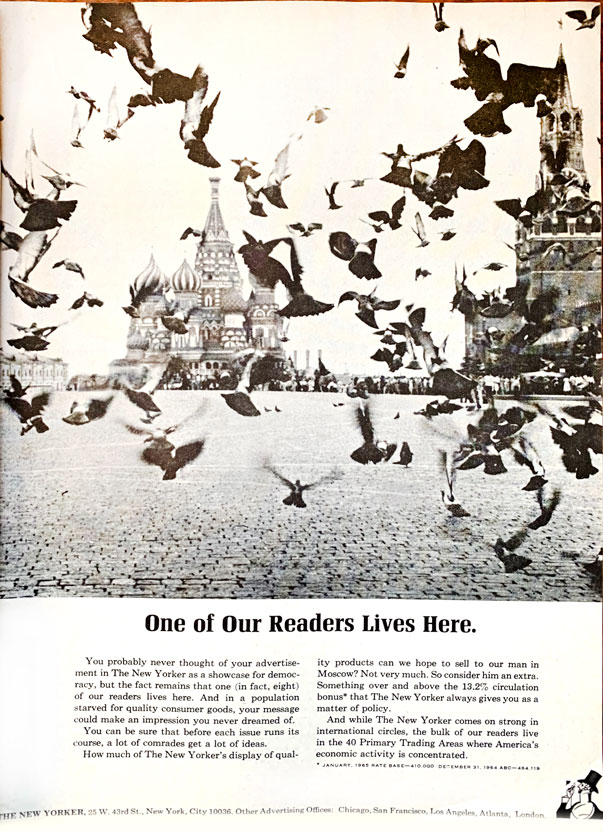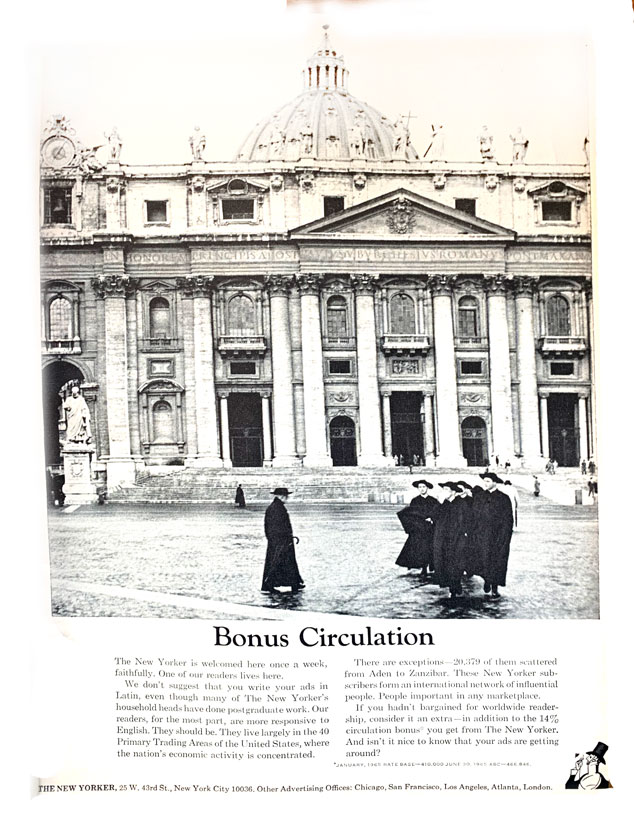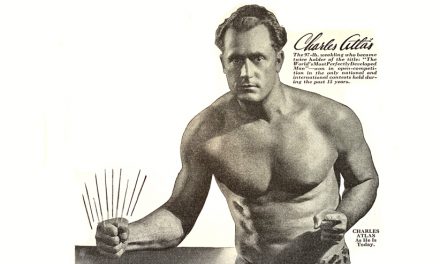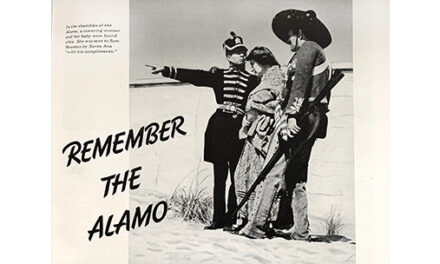Look at this wonderful writing from The New Yorker— The New Yorker’s own advertising that is!

Cover of the first edition of The New Yorker, February 21, 1925
What can you say about The New Yorker magazine? That the reporting is in-depth? That there’s lots of political commentary and cultural criticism? That the fiction is engrossing?
But what if you had to sell The New Yorker to advertisers and advertising agencies, convincing them that they should spend their promotion dollars in The New Yorker.
Read how it was done in this series of 1955/1956 ads for The New Yorker published in Printers’ Ink, the trade magazine of advertising and marketing management.
And, as your read the copy, which is reproduced below – admire the short sentences, the appropriate words, and the touch of humour. Note the communication of the principal selling points: The New Yorker circulates far outside the city of New York; reaches the 40 Primary Trading Areas where America’s economic activity is concentrated; is read by well-educated readers; and the advertising rates are a bargain because The New Yorker actually has a higher circulation than it charges for – 13.2% more readers than its circulation base.
Enjoy these examples of creative advertising at its best – advertising that befits the product.

One of our readers lives here
Once a week, The New Yorker gets sent up to Leavenworth. One of our readers lives here.
You couldn’t ask for a more captive audience. But don’t let confinement fool you. Some of today’s better class of prisoners have formidable purchasing power.
The New Yorker is a boon to rehabilitation too. It keeps an inmate so current you’d hardly know he’s serving time.
All this comes as extra to you, of course, over and above the 13.2% circulation bonus you get from the New Yorker.
And while some of our readers live in houses that are not exactly homes, the vast majority live quite freely in the 40 Primary Trading Areas where America’s economic activity is concentrated.

One of Our Readers Lives Here
You probable never thought of your advertisement in The New Yorker as a showcase for democracy, but the fact remains that one (in fact, eight) of our readers lives here. And in a population starved for quality consumer goods, your message could make an impression you never dreamed of.
You can be sure that before each issue runs its course, a lot of comrades get a lot of ideas.
How much of The New Yorker’s display of quality products can we hope to sell to our man in Moscow. Not very much. So consider him an extra. Something over and above the 13.2% circulation bonus that The New Yorker always gives you as a matter of policy.
And while The New Yorker comes on strong in international circles, the bulk of our readers live in the 40 Primary Trading Areas where America’s economic activity is concentrated.

Bonus Circulation
The New Yorker is welcomed here once a week, faithfully. One of our readers lives here.
We don’t suggest that you write your ads in Latin, even though many of the New Yorker’s household heads have done postgraduate work. Our readers, for the most part, are more responsive to English. They should be, they live is the 40 Primary Trading Areas of the United States, where the nation’s economic activity is concentrated.
There are exceptions – 20,379 of them scattered from Aden to Zanzibar. The New Yorker subscribers form an international network of influential people. People important in any marketplace.
If you hadn’t bargained for worldwide readership, consider it a bonus – in addition to the 14% circulation bonus you get from The New Yorker. And isn’t it nice to know that your ads are getting around.

Readers who believe that syntax is everything, will find much to criticize in this advertising copy but readers who support good communication will salute the copywriter who got the message across.
Here’s a Printing Times post showing how The New Yorker creatively filled blank advertising space.










